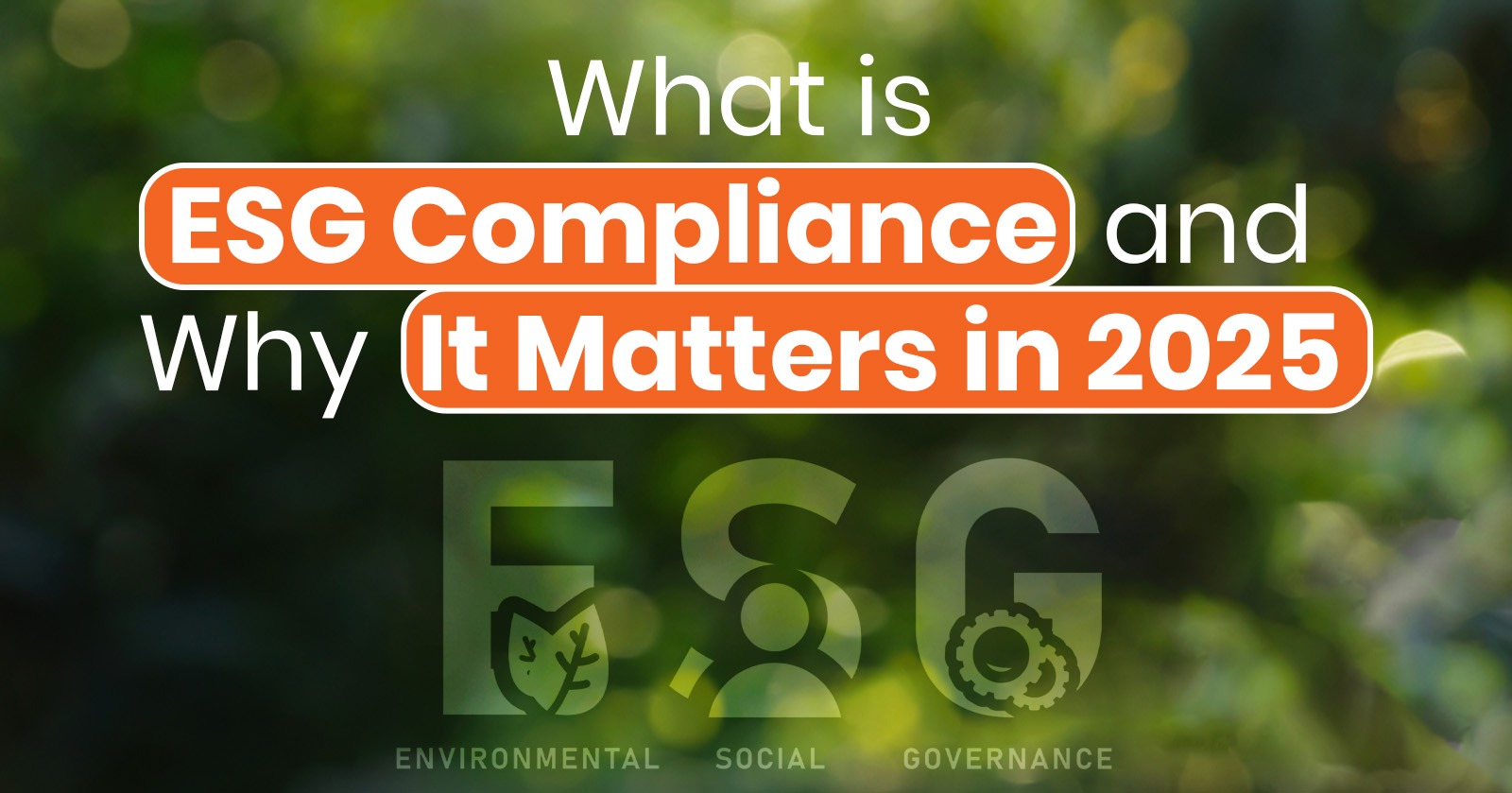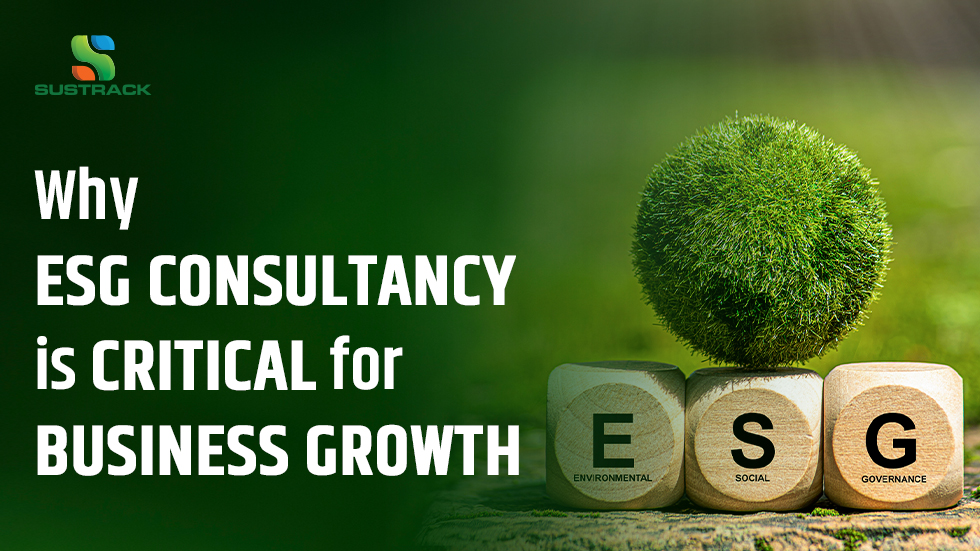Complete Guide to ESG Reporting for 2025 Compliance

As the environmental and social expectations evolve and regulatory landscapes tighten, Environmental, Social, and Governance (ESG) reporting has moved from a voluntary practice to a strategic and mandatory requirement for organisations. In 2025, businesses face growing pressure from regulators, investors, and consumers to disclose their ESG reporting performance transparently and accurately for Sustainability disclosure.
It doesn’t matter whether you’re a listed entity preparing for the BRSR Core framework, a company with a global level of fame that aligns with ISSB or CSRD, or an SME looking to future-proof your operations. This is a one-stop resource. It comprehensively covers the latest ESG compliance requirements, provides practical steps for building your ESG strategy, offers tools for data management, and outlines best practices for sustainability disclosure reporting that align with both Indian and Global standards, including GRI standards.
Importance of ESG reporting in regulatory compliance
Sustainability Disclosure is essential for all Top 1000 listed Companies. Let’s briefly review the role of sustainability disclosure in leading a Global ESG Framework, considering several factors, as well as its importance for regulatory compliance, as follows:
- Meeting Regulatory Requirements: Numerous regulations and standards require companies to disclose their ESG reports. The information related to Environmental, Social, and Governance factors spans across all aspects of business operations. Through ESG reporting and non-financial reporting, a company avoids many hurdles and penalties from the Government and legal side.
- Demonstrating Proactive Engagement: ESG reporting enables companies to showcase their proactive commitment to sustainability and responsible business practices. This influences the investor’s decisions, attracts funding, and enhances brand reputation.
- Supporting Risk Management and Mitigation: ESG reporting also provides a means for the company to identify and address potential risks associated with ESG, which stands for Environmental, Social, and Governance factors. For example, Labour issues, Environmental damages, or Corporate Governance failures. This proactive approach to risk management, as documented in ESG reports, can contribute to regulatory compliance and help companies avoid costly litigation or penalties.
- Building Stakeholder Trust: Through transparent ESG reporting and non-financial reporting, trust with stakeholders, including investors, customers, employees, and the broader community, is fostered. Stakeholders and regulators take an interest in companies that are ready to disclose their ESG performance, and reporting helps build confidence and loyalty.
Overview of global frameworks (GRI, TCFD, CSRD, BRSR)
Let’s have a complete overview of Global Frameworks such as GRI, TCFD & CSRD below:
Global Reporting Initiative: The GRI Standards framework is widely used globally for almost every type of company, regardless of its domain. A manufacturing company or a company dealing in pharmaceuticals. We have characterized the overview in four categories, as follows:
- The purpose of GRI is to enable companies to report their economic, environmental, and social impact.
- The GRI standards impact every part of the framework, as it encompasses a wide range of sustainability topics, including the environmental performance of an organization, such as emissions and resource use. How a company contributes socially is also taken into account, including labour practices and human rights.
- It offers a set of standards that provide a common language for ESG reporting and non-financial reporting, helping organisations to put transparency at the forefront of their stakeholder relationships.
- The GRI standards offer a comprehensive framework for ESG reporting.
Task Force on Climate-Related Financial Disclosures:
- The TCFD framework takes note of the climate-related risks of a company. They develop consistent climate-related financial risk disclosures for many companies and other financial institutions.
- The TCFD Framework primarily focuses on the financial implications of climate change, both risks and opportunities.
- It recommends disclosures related to governance, strategy, risk management, and metrics & targets, particularly in the context of climate change.
- It focuses on understanding the financial implications and impact of climate change.
CSRD (Corporate Sustainability Reporting Directive)
- CSRD compliance is only applicable to large companies and those listed on an EU-regulated market.
- Companies under CSRD compliance report on a broad range of sustainability topics, including climate change, workforce development, business conduct, and the management of sustainability issues that affect business operations.
- CSRD compliance requires integrating sustainability considerations into business and governance, moving beyond the voluntary ESG reporting and non-financial reporting framework.
BRSR (Business Responsibilities & Sustainability Reporting)
- BRSR (Business Responsibility and Sustainability Reporting) is an ESG disclosure framework introduced by SEBI. Applicable to the top 1,000 listed companies in India by market capitalisation.
- It became mandatory from FY 2022–23 and it replaces the earlier Business Responsibility Report (BRR) format.
- It syncs with global sustainability standards (like GRI, SDGs, TCFD) and is based on 9 principles from the National Guidelines on Responsible Business Conduct (NGRBC).
- Covers key areas: energy use, climate impact, employee welfare, ethics, governance, and community engagement. Includes both essential (mandatory) and leadership (voluntary) ESG indicators.
- Aims to improve transparency, risk management, and investor confidence and encourages businesses to adopt a sustainable and responsible growth path.
Common challenges and how to overcome them in ESG Reporting
Many companies continue to struggle with effective ESG reporting. It doesn’t matter whether you are leading an enterprise in sustainability or a CXO navigating ESG Compliance for the first time; understanding the key hurdles and their solutions can make a significant difference.
Let’s discuss the most common ESG challenges and how your company can overcome them:
- Data Collection Difficulties:
The Challenge:
One of the most persistent challenges in sustainability disclosure is the lack of structured, high-quality data. ESG metrics often originate from different departments, such as HR, supply chain, finance, and facility management, and are stored in silos or tracked manually.
How to Overcome It:
- Implement ESG data management software or platforms that can automate data collection and integration to streamline the process.
- Assign ESG champions in different departments to ensure consistency and accountability.
- Standardise your data sources early to minimise inconsistency and duplication.
- Lack of Standardisation Across Frameworks
The Challenge:
With multiple ESG frameworks, such as GRI standards, SASB, TCFD, and CSRD, in play, companies often feel overwhelmed when trying to decide which framework to follow.
How to Overcome It:
- Identify your stakeholders and the frameworks that matter most to them (e.g., investors may prefer the TCFD or SASB, while regulators may focus on the CSRD).
- Choose one or two frameworks that align with your industry and reporting objectives, and ensure internal alignment.
- Work with ESG consultants to develop a customised reporting structure that can map across frameworks.
- Limited Internal Expertise
The Challenge:
Many companies don’t have a dedicated ESG team or personnel with expertise in sustainability metrics, materiality assessments, or impact disclosures.
How to Overcome It:
- Invest in ESG training for key team members, including finance, HR, and operations.
- Collaborate with third-party experts or ESG consultants for guidance and capacity-building.
- Consider hiring sustainability professionals with cross-domain knowledge in policy, data analytics, and stakeholder engagement.
- Keeping Up with Regulatory Requirements
The Challenge:
Global and national ESG regulations are evolving rapidly, from SEBI’s BRSR in India to the European Union’s CSRD, making it challenging for companies to stay compliant.
How to Overcome It:
- Set up a regulatory watch team or subscribe to ESG regulatory and non-financial reporting updates.
- Partner with legal and compliance experts who specialise in ESG disclosures.
- Build flexible systems that can adapt to changing requirements without requiring an overhaul of your entire reporting process.
- Greenwashing Accusations
The Challenge:
A growing number of businesses are facing scrutiny over exaggerated or unsubstantiated ESG claims, which risks damaging their brand credibility.
How to Overcome It:
- Ensure all ESG data is auditable and verifiable.
- Avoid vague language in your reports. Use metrics and results over promises.
- Embrace transparency by disclosing limitations, challenges, and even failures. Authenticity builds long-term trust.
- Resource Constraints
The Challenge:
Especially for SMEs, ESG reporting can be seen as a resource-intensive task with unclear ROI.
How to Overcome It:
- Start small. Focus on material issues that align with your core business and the interests of your stakeholders.
- Use digital tools to reduce manual workload and streamline processes.
- Highlight the business value of ESG, including reduced risk, enhanced investor appeal, and improved operational efficiency.
- Stakeholder Engagement Gaps
The Challenge:
Without engaging internal and external stakeholders, ESG reports often fail to capture the full scope of materiality and relevance.
How to Overcome It:
- Conduct regular materiality assessments in consultation with stakeholders.
- Involving leadership and employees early in the ESG strategy is crucial.
- Make your ESG report more than a document; use it as a communication tool to connect with customers, communities, and investors.
ESG reporting isn’t just about compliance; it’s about building a resilient, future-ready business. By understanding and proactively addressing the challenges, companies can turn ESG reporting into a strategic advantage.
Whether you’re just beginning your ESG journey or looking to elevate your current disclosures, remember: the goal is not perfection; it’s progress with purpose.
How does Sustrack simplify ESG reporting and Non-Financial Reporting?
Sustrack simplifies sustainability disclosure and non-financial reporting by offering an integrated, intelligent platform that streamlines the entire process, from data collection to regulatory compliance. Sustrack enables businesses to effortlessly capture and manage ESG data across departments, eliminating silos and manual spreadsheets. It supports multiple global and regional frameworks like BRSR, GRI, TCFD, and CSRD, ensuring your reporting aligns with stakeholder expectations and evolving regulatory requirements. With automated data validation, audit-ready documentation, and real-time dashboards.
Sustrack makes ESG compliance transparent and traceable. It also empowers companies with materiality assessments, risk mapping, and performance benchmarking, helping them focus on what truly matters. More than just a tool, Sustrack combines technology with hands-on advisory, delivering actionable insights that go beyond reporting, enabling companies to turn ESG from a compliance burden into a strategic advantage.
Takeaway
As 2025 unfolds, ESG reporting and non-financial reporting have become a non-negotiable part of business strategy. With regulations like SEBI’s BRSR and global standards such as CSRD, TCFD, and GRI standards gaining traction, organisations must adopt structured, transparent, and stakeholder-focused reporting practices. This guide has outlined the essentials for compliance and long-term impact. Beyond meeting mandates, ESG reporting builds trust, attracts responsible capital, and strengthens brand value. Companies that act early and invest in robust ESG systems will be better positioned for sustainable growth and future opportunities. In today’s landscape, ESG is more than just a report; it’s a reflection of your organisation’s values and vision.



